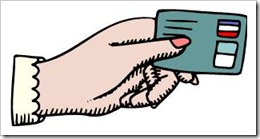Entries Tagged 'copywriting' ↓
March 26th, 2010 — copywriting, freelance copywriter, SEO copywriter

More and more businesses are moving to the internet. But that can cause an issue over web copy.
Many companies sell products made by other manufacturers. But they aren’t going to be that manufacturers only outlet online. So, you then have the situation where you have several websites selling the same products.
There’s nothing wrong with a bit of healthy competition, but there is the issue of duplicate content to worry about.
Most manufacturers will produce standard ‘blurb’ to accompany their product. This will go into details such as how it’s made, main uses, features etc., – you know the kind of thing.
But the problem is that many businesses simply use this standard sales message on their websites too. The result is the same content written in several different places on the web which can seriously damage their search engine results.
So how do you get around this problem?
Well, you’ll either have to get to grips with SEO or hire a good SEO copywriter to write fresh, original content for you.
Yes, copywriters write for a living, but that doesn’t mean they are also mind-readers.
If you want great copy, you have to give a detailed brief identifying exactly what you want. Sometimes people are surprised at the level of information a copywriter needs. But let me ask you something – if you were having a new kitchen fitted would you just point the fitter to your kitchen and leave him to it, or would you pick out the units you wanted, show him where they were to go and decide on a colour scheme?
So, for every product you sell, your copywriter will need the following information:
- What the product is
- What is its major benefit?
- What evidence do you have to back this up?
- What variations does it have (size, colour, shape, speed etc.)
- Are there any reasons why someone wouldn’t buy from you?
- What are its main features?
- What makes this product better than its competitors?
- What objections might your reader have to buying this product?
Then they’ll require information such as:
- What are the primary key phrases you’re targeting on this page?
- What are the secondary key phrases?
- What is your brand personality?/What tone do you want to convey in the copy?
- What do you want your reader to do after reading this page (call you, go to order page, email you…)
Depending on the product, your copywriter may well have other questions to ask.
The key is, whenever you are commissioning a copywriter to write for you, (whether it’s SEO web copy, brochure content, a newsletter etc.) always provide them with loads of information.
When they provide you with a requisition document to assess the project, make sure you answer all their questions as fully as possible. This will give them a better chance of hitting it right first time.
Remember, a copywriter if a professional writer, not a mind reader.
February 1st, 2010 — case studies, copywriter, copywriting, copywriting tips
Normally, when I talk to you about copywriting I hark on about how  important it is to write about the benefits of the product you are trying to sell.
important it is to write about the benefits of the product you are trying to sell.
That’s because benefits are the vital element to make your reader understand that you product is for them and so are a copywriter’s best friend.
However with the Case Study you have the prime opportunity to bring your benefits to life by dramatising them.
It’s not an easy road
Writing case studies isn’t easy, but the time and effort you spend honing them will be well worth it.
Testimonials are great, but case studies will carry more weight.
Why?
Because they are perceived as being truthful; you are telling your reader a story. Your case study will have a hero (your customer), a predicament (the problem they face), a narrative (what you did and why) and finally a happy ending.
So how can you be sure you write a compelling, interesting and relevant case study?
7 tips to creating a winning case study
Don’t make the mistake of thinking that writing a case study is simple. It isn’t. There are a lot of bad ones out there so I’ve put together a few tips for you to help you create a winner.
- Tell it from your customer’s perspective otherwise it will just come across as a piece of hype. Readers will be able to relate to your customer, after all they may well be facing the same problems. Let’s face it they probably are – if they weren’t why would they be reading your case study?
- Use real people in your photos if you can. Not everyone will be willing to do that but it adds weight to your case study if you can.
- Include as many facts and figures as you can. And give specific examples of what you did to solve their problem. Wishy-washy information will get you absolutely nowhere.
- People love pictures so use shots of your customers premises, machinery or whatever is relevant to your case study. This will add a sense of realism that you can’t achieve by using stock images.
- Let your client speak directly. Include plenty of relevant quotes and make sure you attribute them to the right person (including their full name and position). This is a great opportunity to present a new voice to your case study – try and use their language to add authenticity.
- Give it a good structure – a brief introduction to your customer, what their problem was, how you solved it, what the outcome was and future implications for them/their business.
- Make sure it is clear how they benefited from your product/service/expertise. This is crucial. If you tell your reader how your customer benefited they will associate that with how THEY will also benefit.
Now for things you don’t want in your case study
As I’ve already mentioned, your case study is your opportunity to prove to your readers that you can do something amazing.
If you want to sell something to a specific audience, you’ve got to prove to them they need it and that you’re good – very good.
Below are list of 4 elements you don’t want in your case study:
- A beginning that talks at length about your customer’s business. If you want to add information about their company, turnover or premises etc., put it in boxes at the side of your case study.
- Challenge and solution but without the results. Proof is the name of the game and without results you have proved absolutely nothing.
- No quotes. Your customer’s voice is essential. They need to speak to your reader and tell them precisely what you did for them and the results they have seen as a result.
- Dull narrative. Long words, complex sentences, excessive jargon, and an awkward flow create a boring case study. If no one wants to read it how can you prove yourself to them?
More and more people out there are taking an increasingly cynical view of “marketing speak”. Unsubstantiated claims are boring and damaging to your business.
People love to read about other people and their experiences and case studies provide the perfect vehicle for a friendly and non-salesy look at your business. Of course they are also superb vessels for a bit of stealth marketing – but hey! You’re proving what you do works, there’s no hard sell.
Sally Ormond – freelance copywriter
January 29th, 2010 — copywriting, copywriting tips, freelance copywriting

The debate about which is best, long or short, copy is one that is bound to rattle on for many years to come. Often what it comes down to is personal preference.
Many people claim that short copy will win hands down every time because:
- Nobody reads long copy
- If it’s an advert is has to be short copy
- People are too busy to read long copy
Well for a start someone must read long copy because it does its job (writers arguably make more from long copy that short). Plus, if by claiming adverts must be short, does that mean because people won’t read long adverts they’ll automatically read short ones? And by the same token, just because people are too busy to read long copy do they have time to read short?
Getting it all into perspective
When people talk about long copy they immediately visualise sales letters that go on for eternity. But that doesn’t have to be the case.
A long piece of copy could refer to a two page sales letter as opposed to a ten page one. Or it could equally refer to a twenty line email rather than an eight line email.
Size doesn’t matter
The main importance of any sales communication (whatever form it takes) is that it is relevant to the market. If you wrote a short, snappy and powerful advert that was totally irrelevant to its audience it wouldn’t work. If you wrote a six page sales letter that was completely irrelevant that wouldn’t work either.
Therefore its relevance is more important than its length.
So, when discussing the merits of long or short copy you would consider it as longer or shorter copy. But it is the relevancy of the information it contains that is more important here.
Your sales message should be as long as is necessary to get your audience to reach a buying decision and hand over their credit card.
Sally Ormond – freelance copywriter
January 22nd, 2010 — copywriting, copywriting tips, freelance copywriting

As copywriter’s we know what our audience wants, right?
All we have to do is give them an unbelievably good offer and they’ll say yes. They’ll identify our product with the life they’ve always wanted to live so they’ll snap our hand off just to get it.
Great – but is it?
Does life really happen like that?
Wake up to the real world
There is a problem here; one that you may not have thought of.
What if they really don’t what your product?
“Ha! Of course they do – how can they possibly refuse the offer?”
Oh boy, there’s the problem straight away. You’re assuming they’ll buy your product no matter what.
You can’t lead a horse to water…
OK, I don’t have a horse but that heading sounded better than “You can’t lead a Spaniel to a tablet”.
Take my Springer Spaniel, Jerry (yes, he’s Jerry Springer) – he may not be the most intelligent dog in the world but he knows about medicine. Just like a kid, when he’s given a course of tablets from the vet, he’ll do anything to avoid taking them (not that I take my kids to the vet, it’s just that they know medicine usually tastes horrible and really don’t want to take it).
Put it in his bowl of biscuits and he’ll eat every crumb but leave the pill. Put it inside a piece of cheese and he’ll eat round it.
The trick is to find something he will eat (please note this is not a problem with my other dog, Scooby. But then again he is a Labrador and will eat anything). I have learned to tailor my ‘sales pitch’ to him.
The only way I can get him to take his medicine is by grinding up his tablet and sprinkling it on a piece of bread thickly spread with Marmite. Hand that to him and he’ll take your hand off and love you forever.
At the end of the day, if you pitch the wrong product to your audience they won’t buy it.
Pitch correctly, to the correct audience and you’ll end up with a loyal customer base that’ll come back again and again. They’ll value the product you sold them, remember you as a company that ‘doesn’t force their products down their throats’ and will trust you for future purchases.
Remember then, people not buying doesn’t necessarily mean your copy is poor or your offer is weak. You can’t make people buy simply because you want them to. Make sure you research your market thoroughly – make timely offers to the right audience and you’ll grow a marketing list that’s worth its weight in gold.
Sally Ormond – freelance copywriter
January 20th, 2010 — copywriting, facebook, social media
As a freelance copywriter, I use social media to promote my company and the services I provide. Up to now that has been mainly through blogging, article marketing, bookmarking, Twitter, online forums and networking sites. But there was one outlet I hadn’t delved into – Facebook. I am on facebook in a personal capacity but had never considered it for business use – until now.
Can facebook really help businesses?
Before I go any further, I’m not an expert on using facebook fan pages – I’m still learning myself. But with the growing popularity of social media marketing I realised that it was something I was going to have to get to grips with sooner or later.
Facebook pages seem to becoming increasinglt the second home page for businesses online. As such, SEO is an important factor in the design of your page. So how do you squeeze the most SEO benefits out of your facebook page? Well here are a few pointers to kick you off:
- Choose a great name and stick to it – your business name is ideal.
- Pick the best URL possible. Now, if you have 25 fans or more, you can choose your own URL (mine is http://www.facebook.com/freelancecopywriting) in which yo ucan incorporate you keywords.
- Make your About Us box count – this is prime realestate for your keywords so use it wisely.
- The info tab should include http’s of related websites and specific information such as your keywords, geographical location etc.
- Post direct links to your website from your page.
- Use your facebook badge of your websites to show people you’re there.
Is it really worth it?
Well, here are 11 mindblowing reasons your business needs Facebook curtesy from Social Media Examiner:
- There are over 350,000 million global users of facebook
- There are 100,000 users in the US alone
- The average facebook user spends a staggering 55 minutes on it every day
- Nearly 80,000 sites use facebook connect
- Facebook fan box is becoming pervasive
- The average facebook user has 130 friends
- The average facebook user “fans” 2 pages per month
- Only 4% of pages have 10,000 or more fans
- Wall posts do’t impact popularity so make use of video, photos and links
- Customised news feeds
- Real-time search ability changes the game completely
Beginning to see how it will help your business?
Get yourself a fan page today like mine – see how you get one with it. Why not come back here and tell us all about your experiences and any tips you have picked up along the way.
Briar Copywriting – Leading UK Freelance Copywriter

Promote Your Page Too









